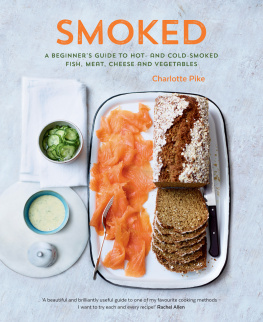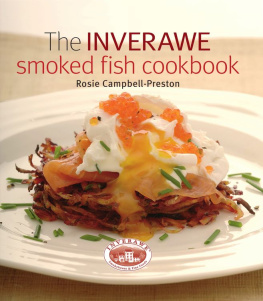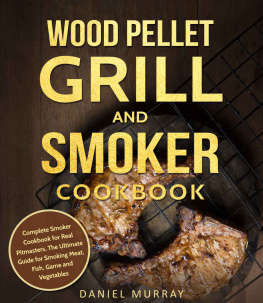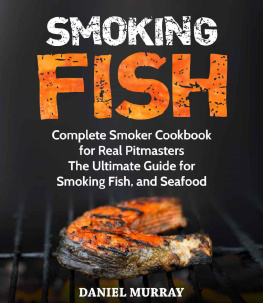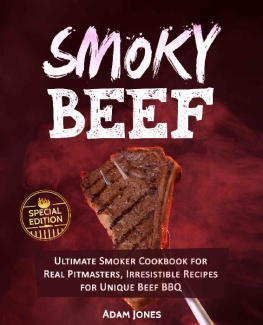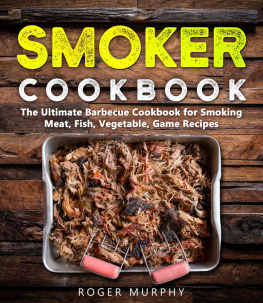Contents
Guide

Charlotte Pike is the bestselling author of Fermented, shortlisted for the Andr Simon Food Book Award, and the Hungry Student series. She is a graduate of the Ballymaloe Cookery School, contributes recipes to many cookery books and publications, and often demonstrates at food festivals in the UK.
Charlotte also works as one of the UKs leading independent cookery teachers and cooks in the UK and internationally for her private clients.
Charlotte studied French and Spanish at Exeter University and then went to work in the City of London before turning her love of good food and cooking into her career. Charlotte currently sits on the Guild of Food Writers Committee.
Contents

HOW TO USE THIS EBOOK
Select one of the chapters from the and you will be taken to a list of all the recipes covered in that chapter.
Alternatively, jump to the to browse recipes by ingredient.
Look out for linked text (which is in blue) throughout the ebook that you can select to help you navigate between related recipes.
You can double tap images to increase their size. To return to the original view, just tap the cross in the top left-hand corner of the screen.
INTRODUCTION
Smoking is an ancient and delicious art and has to be one of the most magical ways of cooking food. There is something so deeply satisfying about cooking in such a comparatively primitive way by modern standards, and you are rewarded with the most mouthwatering results. Most people find the smell of wood smoke alone incredibly evocative and comforting. Its instinctive, reassuring and primeval after all, fire has always signified warmth, the comfort of home, the preparation of food and, perhaps, most crucially, survival.
It is much easier and quicker to smoke your own food than most people think. There are endless opportunities for creativity with a great number of ingredients and combinations of flavours of wood, whose aromas can be incorporated. Little is required in terms of equipment and space, and there are many pieces of portable kit available. If you have no garden, you can smoke on the stovetop in the kitchen, or even take a portable smoker to the beach or countryside on a picnic, shoot or fishing trip. Building your own smoker is an option but only if you feel so inclined, as there are many excellent ready-to-go smokers on the market at a range of prices. To start to smoke your own food is to embark on a never-ending adventure.
Smoking is a method of flavouring, cooking and extending the life of food and has been used in many cultures all over the world for thousands of years. Traditionally, ingredients predominantly meat and fish were salted, dried and then smoked, so could subsequently be kept for the short term, extending the availability of valuable protein in the diet during lean months but, unlike salting, drying or fermenting, smoke is not a preservative. There is evidence of smoking used by ancient civilisations, such as fish smoking in Mesopotamia in 3500 BC; there are remains of a smokehouse on the River Bann in Northern Ireland dating back to 2000 BC and of black smoked apricots in the Chinese Tang dynasty (AD 618907). Nowadays, smoking is mainly undertaken for flavour, rather than preservation. The flavour of smoke ranges from a subtle and delicious extra dimension to robust, woody notes added to an ingredient.
Wood smoke contains hundreds of components that coat the exposed surfaces and gently penetrate an ingredient, creating an impermeable tarry outer layer, which lightly seals the ingredient and acts as a barrier to pests and bacteria. The longer the ingredient is smoked for, the more the flavour penetrates and the stronger the flavour of the smoke.
Ways of smoking
There are two methods of smoking; hot smoking and cold smoking. Many of us are most familiar with cold-smoked ingredients, such as traditional smoked salmon and smoked bacon.
Hot smoking takes place generally between 50 and 100C and either fully or partially cooks an ingredient. The smoky flavour is imparted and the food is lightly cooked. It is the quickest and, generally speaking, easiest way to smoke food. Meat will often need further cooking once it has been smoked, to make it safe or more palatable and to improve the texture crisping the skin on a duck breast, rendering fat on a joint or achieving sizzling skins on sausages. Some fish and shellfish will be adequately cooked through once they are hot smoked and can be served immediately.
Cold smoking takes place between 10 and 30C though often at 29 or 30C. This method is used to saturate the ingredient in smoke, but not to cook it. Cold smoking very gently dries out the food and imparts a smoky flavour. It is a process that has traditionally been undertaken in the autumn as the ambient temperature must not exceed the temperature at which you are smoking or youll run into problems.
Apart from hardwoods (never use softwoods), such as oak, apple, beech, maple and hickory chips, there are many materials that can be used to generate smoke, and they include charcoal, tea, seaweed, hay, peat, rice or sugar. This is where you can play. You can make up your own mixes and store them in jars, using two tablespoons at a time, whenever you smoke food. These mixes will keep well, stored in an airtight container or lidded jam jar. Try mixing 100g tea leaves, seaweed or hay with 50g white rice and 50g caster sugar. Shake to mix well, and put this dry mix straight in the smoker. This mix will not start to take as quickly as wood, so be patient. You can smoke using whichever material you like for as long as you like (accepting the added pungency in flavour). The smoking times can be varied to suit your tastes.
The real joy of smoking is that there are very few concrete rules to follow. You will find your way as you go and very soon you will be able to tailor your smoking to suit your personal tastes. Whatever you produce will taste totally unique and quite unlike commercially produced versions. It can be difficult to give very specific instructions as to what to do, as the processes vary significantly depending on ingredients, climate and equipment, but you should quickly get a feel for what works for you and what you like. Make sure to record your experiments, and do enjoy the process.
Id advise starting with shorter smokes to enable you to monitor the smoker, how it performs and the signs of what to look for first, rather than embarking on a long smoke at the beginning.
There are many more ingredients that can be smoked than are in this book. The recipes that are included are some of the most delicious and useful to try, and they work extremely well in so many recipes. But once you have mastered your techniques, the world is your oyster. Youll need to invest a little time and acquire a couple of pieces of kit, but the rewards for your investment are truly exciting. Lets get started.
How to prepare your ingredients for smoking
The first rule is this: if you are smoking a raw ingredient in its original state, such as a fillet of fish, a vegetable or a joint of meat, then it will need salting, curing or brining before it is smoked. You need to allow time for this pre-smoking stage, and then for essential drying once your ingredient has been prepared.

